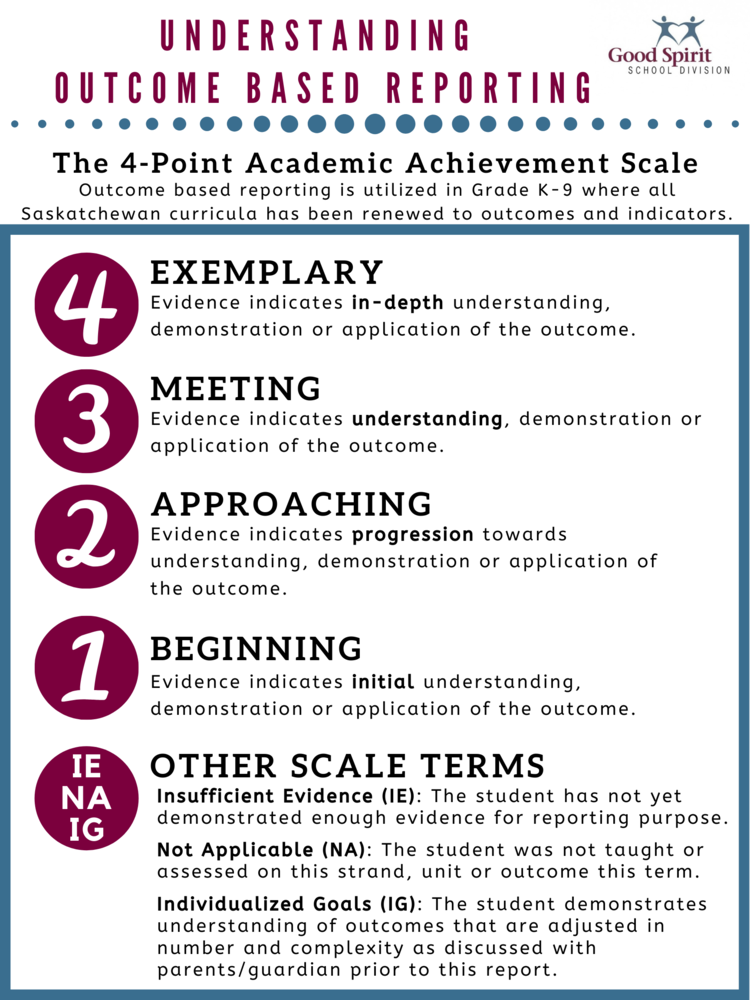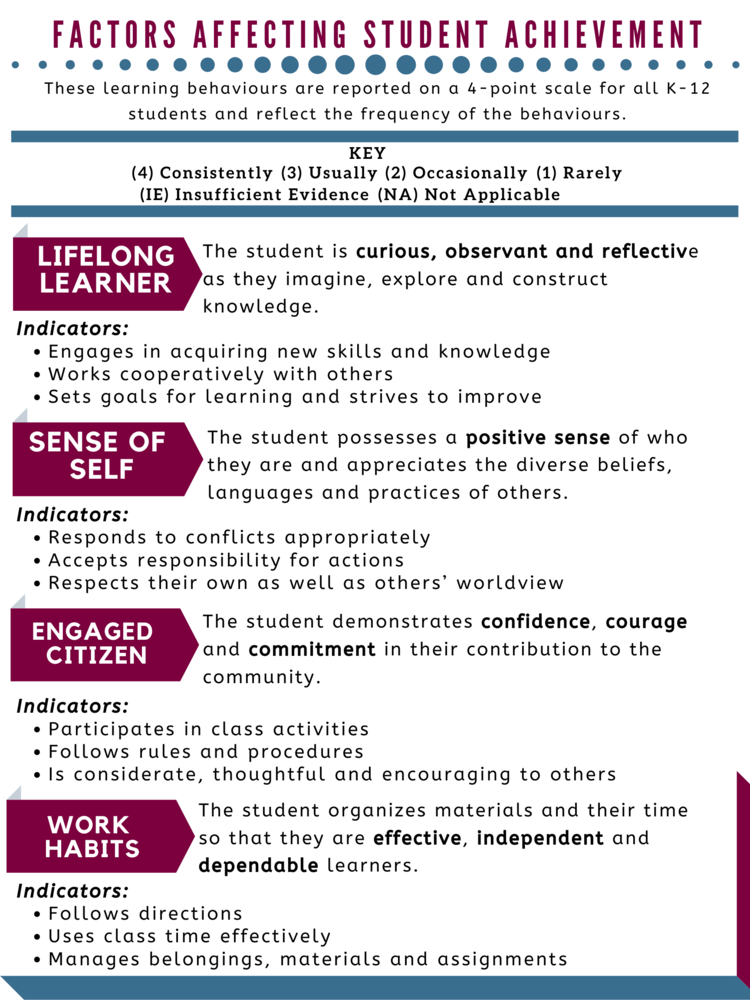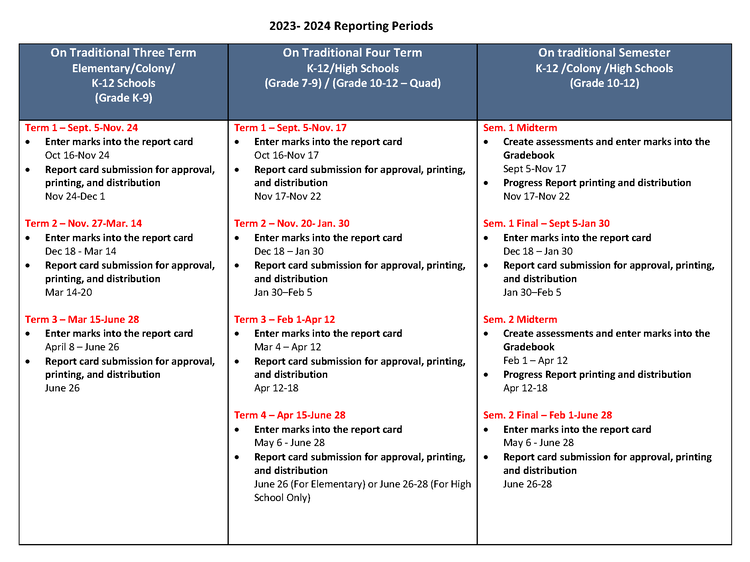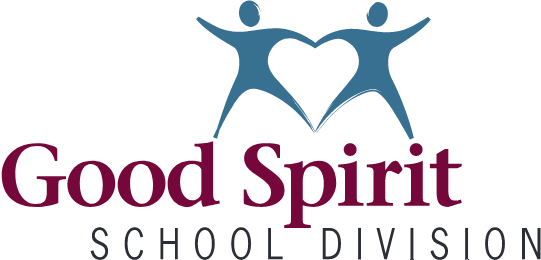
Curriculum renewal to an outcomes-based approach necessitated a change to properly reflect how we report student progress. A committee, established in the 2013-14 school year, put a tremendous amount of thought and effort into gradient descriptors to ensure they best reflect the curriculum. As of the 2019-2020 school year, all grades K-9 students in the Good Spirit School Division are assessed according to outcomes and achievement is reported according to the 4-point Achievement Scale.
Historically assessment practices were designed to rank and sort students. Now assessment supports all students with a focus on learning and the achievement of outcomes. We are committed to ensuring that each student achieves his/her personal best.
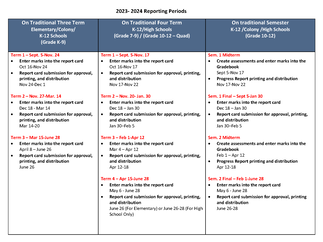
- A report card is issued in Kindergarten at the end of Term 2 and Term 3.
- Elementary & Middle Years (Grades 1-9) report cards are issued at the end of Terms 1, 2 and 3.
- Secondary (Gr. 10-12) report cards are issued at mid-term in both Semester 1 and Semester 2, as well as at the end of each semester. In some schools, middle years (Gr. 6-9) courses may follow the high school report card schedule.
The purpose of the report card is to effectively communicate authentic and accurate feedback to stakeholders about student achievement and learning behaviours. Reporting informs and enhances learning and instruction.
Learning behaviours such as attendance, effort, organization, etc. are assessed and reported separately from academic achievement in Factors Affecting Student Achievement. By separating achievement from behavior, a more accurate picture of what a student knows and understands is demonstrated.
Student-led conferences are an important aspect of outcome-based education. In a student-led conference, students, parents, and teachers come together to discuss, plan, and celebrate student learning. These conferences provide the opportunity for students to be actively engaged in the learning process. Teachers (and students when appropriate) use the GSSD rubrics to determine their current level of achievement on targeted outcomes and then choose work samples and assignments that demonstrate their achievement levels. During the student-led conferences, students show their work to their parents and explain how the samples demonstrate their achievement level on the rubrics.
During the conferences, parents develop a better understanding of what their children are learning and how they are being educated. Student-led conferences are appropriate for students from Kindergarten to Grade 12. The level of teacher involvement changes as students’ progress through the grades.
It is important to note that for some students, a traditional parent-teacher interview may still be required beyond (or in replacement of) the student-led conference. If teachers or parents have a need to meet outside the student-led conference to discuss academic or behavioural concerns, arrangements should be made for these interviews.
